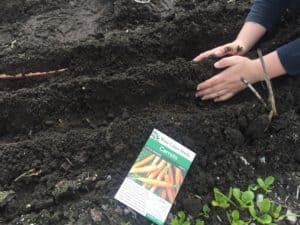- filed under: Outdoor Classrooms, Recommended Crops
How To Grow Carrots With Kids
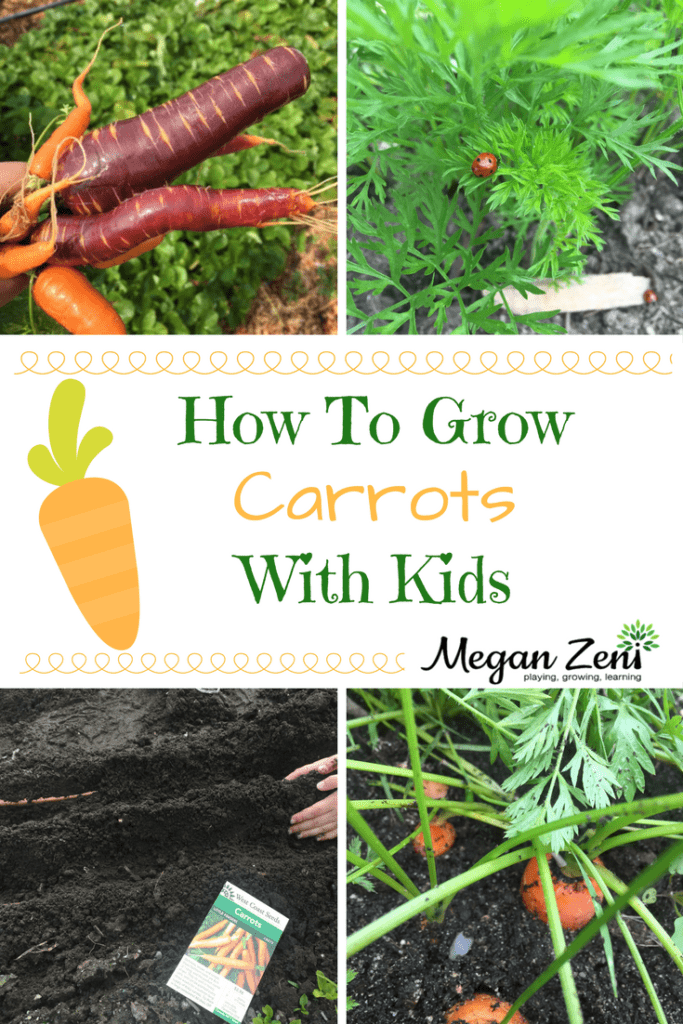
How to Grow Carrots With Kids
Carrots can be tricky to grow. Some gardeners have great luck growing them, while others have nothing but trouble. That said, carrots are a great school garden crop because, when timed properly, they can be harvested pretty much year round. If they are planted before the end of school they can be harvested into the following winter and spring.
Top Tips for Growing Carrots at School
Here are my top tips for how to grow carrots with kids in school and backyard gardens. A reminder that this post is intended as a helpful step-by-step guide on how to grow carrots with kids in school or backyard gardens. It is tailored to growing carrots specifically with children, or in a school garden context. Some advice then, might might be different than conventional gardening advice for that reason.
Easy Step-By-Step Guide to Planting Carrots
Step 1
Carrots are grown from seed and can be sown directly into the garden soil in spring, summer and fall. In my experience, it is best to dig the trench for carrots deeply. Children love the experience of digging up and turning over the soil at a good depth. This is important so the carrots have loose soil to send down their roots unobstructed.
Step 2
Once the soil is well dug, I water the area deeply then hill up the soil and run my finger along the top of the mound to create a very shallow line for the seeds to be carefully placed.
Step 3
I place a half a dozen seeds or so in every child’s hand and take advantage of the excellent pincer grip exercise of placing one tiny carrot seed into the line at a time. Carrots do not do well if planted deeply, so just have the children place them on the top of the soil along your finger line and then sprinkle starter soil mix over them.
Step 4
It is very important to keep the seeds moist until they have fully germinated. If the seeds dry out they will not germinate and you will have to start over.
Notes
Plan your planting during a stretch of cloudy weather if you can. This is one of the trickiest parts of growing carrots. If you remember to water the area deeply before planting the seeds and then either shade the seedlings, or cover them with a row cover, or even a few pages of wet newspaper, your seeds should germinate. Carrot seeds can take several weeks to germinate, so check them frequently and be patient. Once germination has occurred, moisture barriers can be removed.
It is a good idea to place a string line over your row of seeds so everyone knows there is something coming.
If you share your garden with many children or classes, this also prevents other teachers from planting over your seeds! I also like to mark my rows with row markers that have the variety on one side and the date they were planted on the other. This way, the math can be verified! How many days did it take until germination? Until harvest? There’s a lot of calendar math that can be taught while growing carrots!
In order to have a continuous crop of carrots throughout the year, sow a new row of carrots every 3 to 4 weeks from early spring right up until the last week of school in June.
Caring For Carrots
Inevitably, children planting tiny carrot seeds will dump a huge amount of them in one spot. Once the carrots have germinated and the green tops are large enough to grasp, begin the process of thinning the carrots. This simply means pulling out every other seedling or so to make room for the roots to grow without becoming entangled in one another.
There is an excellent lesson in pattern recognition here too. As the carrots grow, a distinctive pattern will emerge with their feathery tops. Other weeds that have begun to grow close by will look very different and are easy to spy when looking closely. Teach children independence in the garden by starting with this simple patterning activity in weeding. Which plants do not belong here?

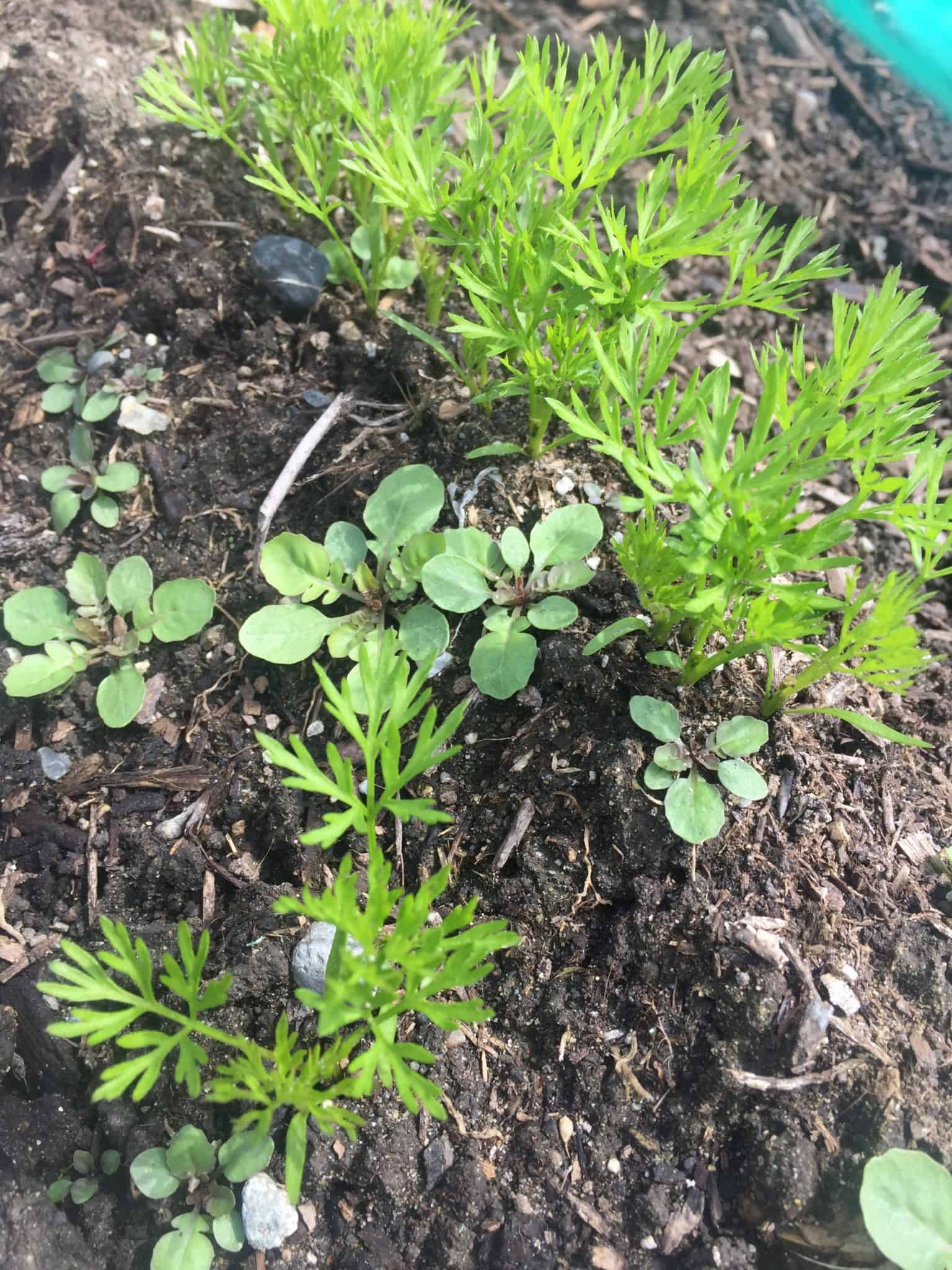
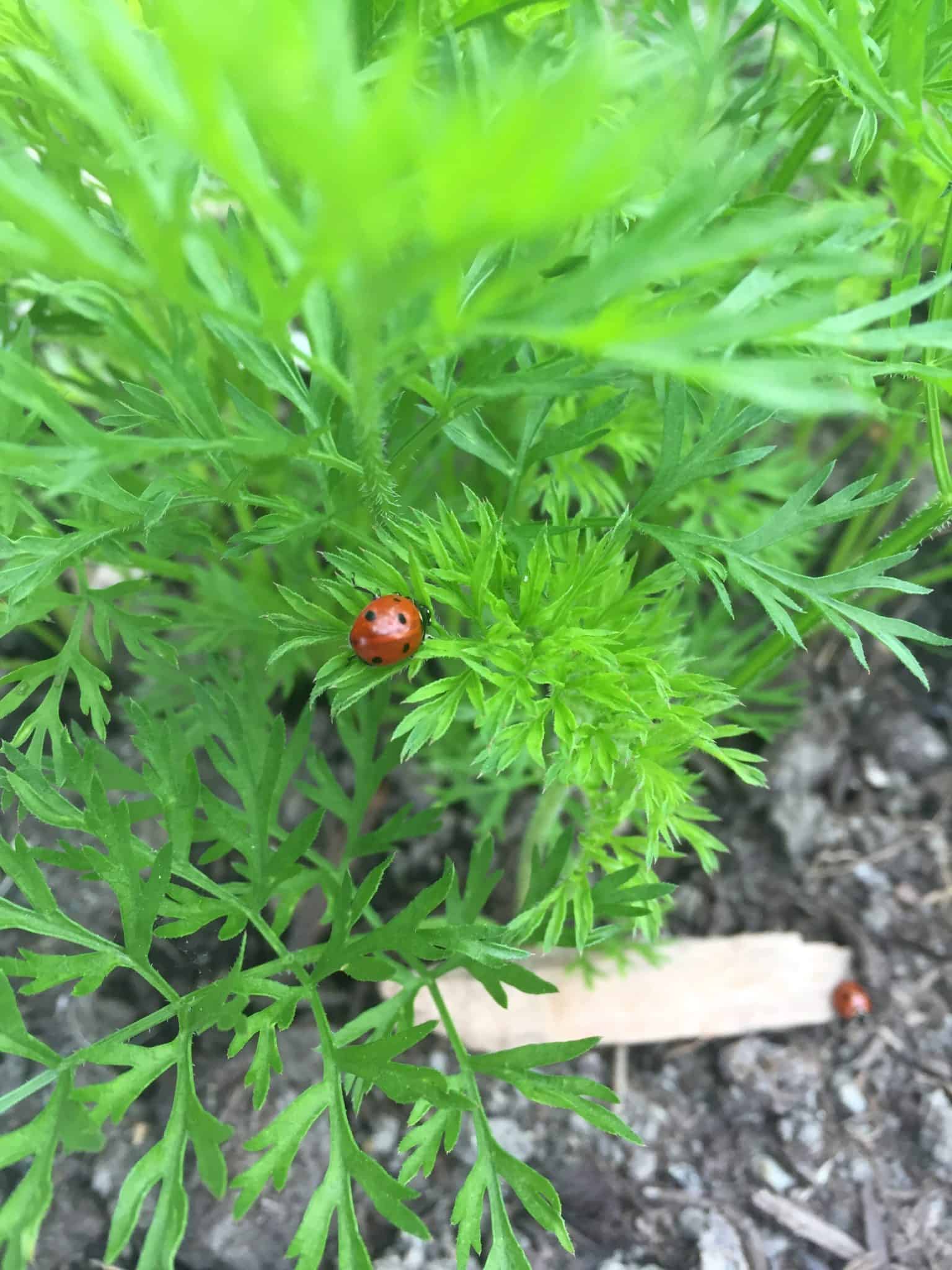
Carrots are not fussy about soil composition. In fact, carrots grow well in sandy soil. But do be careful to keep the soil moist when first planted, and your nitrogen rich fertilizers away from carrots- or you’ll end up with big bushy tops and small little roots! If you’ve had carrots with great feathery tops and lousy carrot growth in the past, consider using a carrot specific fertilizer, like this one from Westcoast seeds.
Carrots are susceptible to a few pests that make growing carrots challenging in their presence. The carrot rust fly has a habit of laying her eggs in the soil near the carrot. Larvae hatch about a week later and eat their way into the carrots.
The marks left behind are rusty-orange, hence the name “rust fly”. If you know you have a problem with carrot rust fly, the only solution is to cover the seedlings with a row cover and be sure to practice crop rotation.
Wireworms can also cause problems for carrots. If you suspect you have a wireworm problem, lay a few large carrots in your beds for a week or so before planting to bait and trap the worms. Crop rotation and deeply digging the soil before planting to expose the worms to the birds are the two best solutions to this problem in your school garden.
Harvesting Carrots
Carrots taste best after a frost. The cold weather sweetens the flavour and they are extra crisp right out of the garden. As a biennial crop, carrots can take quite awhile to grow to maturity. There is a great deal of math that can be done around the timing and planting of carrot seeds with strategic planting for a school-year harvest.
Check your specific seed package for dates to maturity. Some varieties can mature in as few as 50 days, while others can take over 100 days.
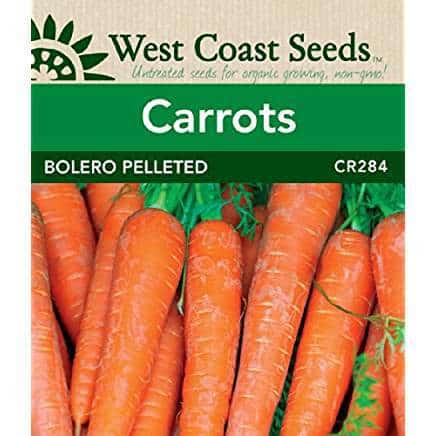
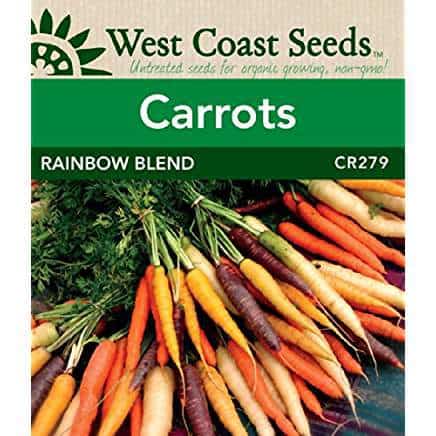

Carrot Recipes
Garden grown carrots are best eaten raw straight from the garden! A quick rinse is all they need to make an easy and fun snack right from the earth. If you are looking for carrot recipes, there are several carrot cookbooks available online for trying out carrot cakes, loaves and muffins.
Gardening With Kids
If you are looking for more ideas on how to grow crops in your school garden, check out these related posts:
How to grow pumpkins with kids
And feel free to join me on Pinterest boards for more curated ideas for gardening with kids!

